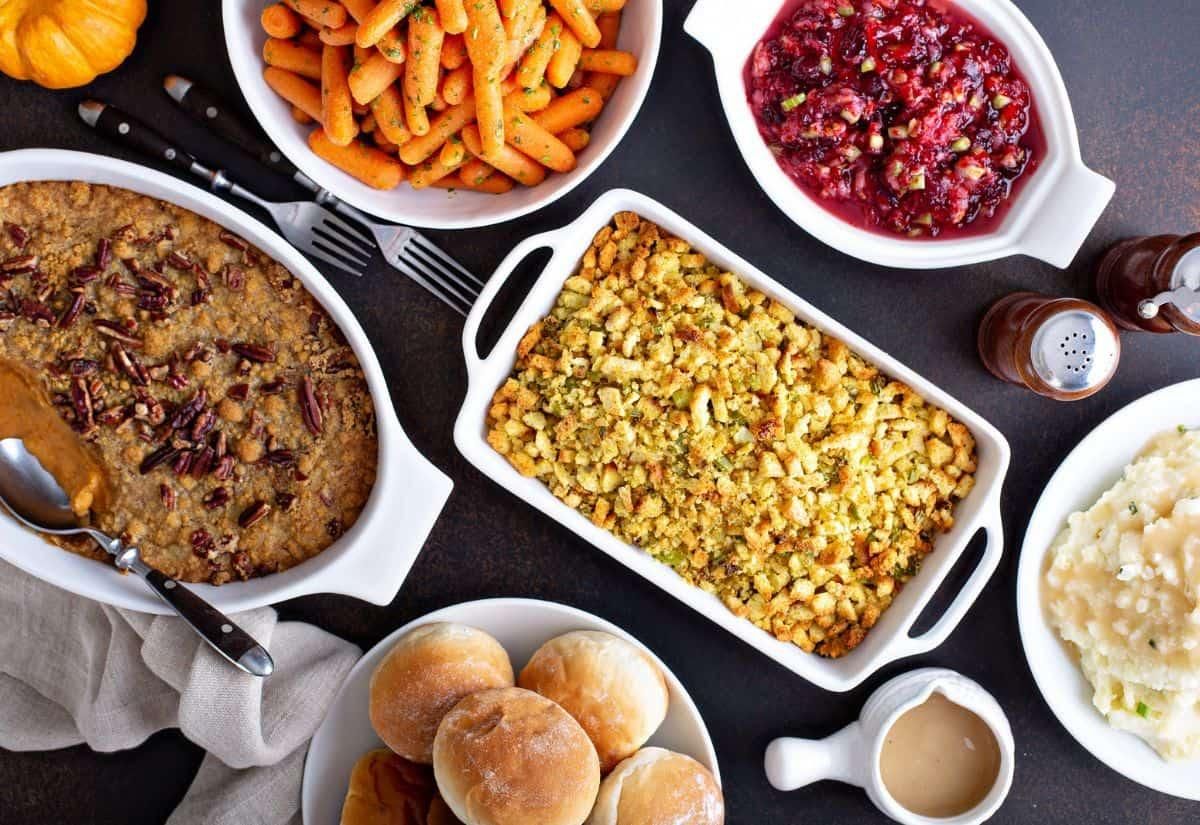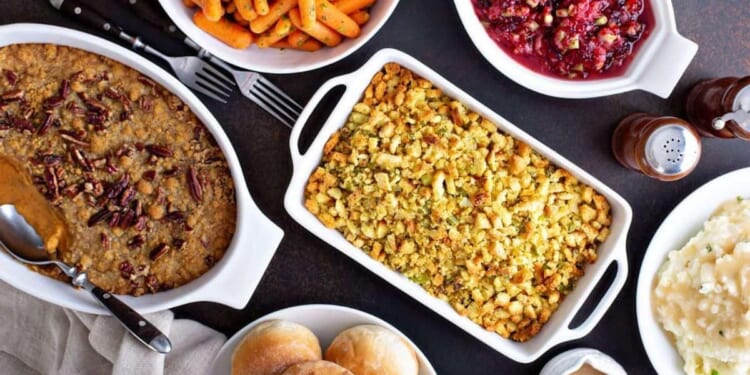
For decades, Thanksgiving’s supporting cast: the casseroles, the rolls, the mashed potatoes, existed in quiet service to the turkey. But the spotlight has shifted. According to Campbell’s most recent State of the Sides, 63% of Americans say they’d rather fill their plates with side dishes than the bird itself.
Across kitchens and social feeds, side dishes are now the main event. The real soul of Thanksgiving isn’t the bird at the center of the table, but everything that surrounds it.
A new kind of centerpiece
Something subtle has happened to American tables over the past few years. As people experiment with smaller gatherings, new dietary preferences and regional twists, the idea of a main course has loosened. The turkey might still anchor the table, but it’s no longer the reason everyone gathers around it.
Side dishes are where personality shows, where generations, cultures and creativity collide. They’re also where home cooks feel free to play, experiment and express who they are. A creamy green bean casserole, a roasted vegetable medley or a bright salad can carry as much emotional weight as any carved slice of turkey.
It’s not just about the flavors; it’s about representation. The side dish has become a space for identity; a dish that says something about where you’ve been, who taught you to cook and what traditions you’ve chosen to keep.
From background music to solo performance
Side dishes used to be predictable. There was comfort in that sameness: corn pudding, mashed potatoes, green beans, cranberry sauce and stuffing. But sameness eventually invites reinvention. Over time, those familiar staples have evolved into more dynamic, layered dishes that reflect today’s food landscape. They’re bolder, more diverse and more seasonal.
Now, a simple pan of roasted Brussels sprouts might come with pomegranate molasses, miso or chili crisp. Stuffing might borrow from sourdough and wild mushrooms instead of white bread and sage. Even mashed potatoes get remixed with parsnips, roasted garlic or browned butter.
The beauty is that none of this replaces tradition; it builds on it. Side dishes have always been the most adaptable part of the Thanksgiving table, and that adaptability is what’s allowing them to shine right now.
The democratization of the menu
Social media has helped reframe what counts as a Thanksgiving dish. Scroll through your feed, and you’ll see spreads that include everything from biryani to gouda mac and cheese to vegan pot pies. The idea of the classic side dish has expanded to include global flavors and personal histories, each with equal standing on the table.
That inclusivity is reshaping how people cook and gather. The menu no longer has to follow rigid expectations; it just has to feel like home. For many, that means bringing something new alongside something old. It’s a way of honoring where you come from while making space for what feels right now.
Practicality meets pleasure
It’s also no coincidence that side dishes fit the mood of modern home cooking: resourceful, make-ahead and unfussy. Most sides can be prepared in advance, travel well and adapt to any number of dietary preferences. They’re the flexible backbone of a meal that’s increasingly about collaboration and convenience.
Even beyond the holiday table, side dishes have carved out a year-round presence. A pan of roasted vegetables can stretch across several meals; a casserole doubles as comfort food and meal prep. These dishes carry the same kind of practicality that once defined casseroles in mid-century kitchens, just updated for contemporary lives.
And yet, practicality doesn’t diminish their appeal. In fact, it’s part of the charm. There’s joy in creating something deeply satisfying from simple, familiar ingredients. The modesty of a side dish gives it freedom; it doesn’t have to impress, so it often does.
Nostalgia, reimagined
There’s also a wave of nostalgia driving this new side dish movement. People are rediscovering recipes passed down through families, such as handwritten cards and creased pages in old cookbooks, and giving them a fresh life. That act of reinterpretation keeps memory alive without freezing it in time.
The dishes that once sat quietly on the edge of the table are now becoming the centerpieces of connection. A revived corn casserole or a reimagined green bean bake bridges generations – proof that tradition doesn’t have to mean repetition.
The new Thanksgiving equation
When people sit down to Thanksgiving dinner now, it’s rarely about one dish. It’s about balance, a mosaic of textures and flavors that feel comforting and expressive all at once. A meal where a tangy salad can cut through the richness of a casserole, or where a perfectly crisp roasted vegetable can spark as much excitement as dessert.
It’s a more democratic table, one that celebrates abundance without hierarchy. Everyone brings a little of themselves: a favorite spice, a family recipe, a borrowed idea, and it all belongs.
The turkey may still hold tradition’s title, but the sides have quietly stolen the show. They’re the dishes that spark conversation, invite experimentation and remind us that joy in cooking often lives in the margins, not the spotlight.
Because the sides, humble, colorful and endlessly adaptable, aren’t really sides at all anymore. They’re the story of Thanksgiving itself: how we gather, how we evolve and how we find beauty in the details.
Shruthi Baskaran-Makanju is a food and travel writer and a global food systems expert based in Seattle. She has lived in or traveled extensively to over 60 countries, and shares stories and recipes inspired by those travels on Urban Farmie.











